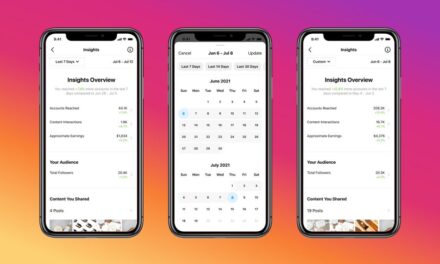Repost from: https://www.marketingtechnews.net/news/2018/oct/18/how-brands-can-play-driving-role-evolving-influencer-marketing-arena/
Influencer marketing has become all the rage in an industry where social media is increasingly at the epicenter. The early days of influencer marketing were characterised by a less than structured approach and lacked what would usually be considered a stitched-up strategy. Then larger brands began dabbling in the space under the advice and counsel of third-party influencer marketing specialists, who brought methodology to the process. The net result was a rise in positive brand sentiment that has been repeatedly proven not only by industry surveys but through campaign performance.
Fueled in part by an expanding ability to gauge performance across all media, influencer marketing has actually become one of the most measurable of the entire media mix. Brands have developed a degree of confidence previously lacking in recent years. Subsequently, the use of influencers or digital creators has become a more accepted part of the marketing mix, and more budgets are being allocated to it. Brands now have the opportunity to truly drive influencer marketing innovation and sophistication to the next level.
More strategic, more integrated
The early-day tactics of simply placing a product in an influencer’s hands and hoping for a positive outcome are increasingly proving less effective. The most influential creators can be selective in both which brands they work with, and how and when they work with them. The best results are achieved when a brand’s core message is seamlessly integrated into the influencer content in an organic and authentic way. The message should be just as clear as in any a thirty-second TV ad or sponsored piece on Facebook, but in this context, it will be far more compelling.
Rather than a simple ‘shout out’ or endorsement, marketers should seek to find ways to integrate product use into a storyline so that it is in fact additive to the content. The gaming industry excels in this domain, with brands such as Ubisoft working with influencers to create live action campaigns to tease new games. On the other hand, Mercedes Benz recently opted to work with Instagram star, Loki the wolf-dog, whose owner takes a trip through the Colorado Mountains with the journey shown through the eyes of the dog. Brands must be brave enough to empower influencers to push the envelope of their own creativity in a way that still remains true to the tone and style to which their viewers have become accustomed, yet is aligned with the marketer’s messaging and values. Through providing creators with brand guidelines and key talking points, brands still retain an element of strategic control, yet the communication itself feels authentic and organic.
Which influencer is right for your brand?
There are hundreds of thousands of options open to brands when it comes to creator talent. To that extent, it is hugely important for brands not to have a preconceived idea of who they wish to use, but instead to firstly narrow their field of view using the available demographic analysis of creator audiences. Furthermore, considering the rising tide of influencer fraud in the space, brands should continue due diligence by auditing the profile analytics of influencer audiences from the backend. If you peer under the hood, you can easily spot signs of such fraudulent behaviour. For example, if someone claims to be a famous influencer in the UK but has a huge audience from say, Indonesia and other random countries, it is likely that they are paying for cheap engagements and/or followers. By basing brand deals on guaranteed organic views/engagements, not followers/subscribers, brands can ensure that it is human actions and not bots which are behind the metrics.
After doing that, it would be wise to then take a step back and gauge the creator’s passion for a given project. It is only when the end piece of creative is delivered authentically with genuine passion that brands are able to unleash the magic of influencer marketing. It is so important to remember that the goal is not to make an ad, but instead to create an authentic and original piece of content which will resonate with the end viewer and create greater brand affinity or a clear path to purchase.
With more and more consumers using ad blockers and subsequently, brands tapping into the influencers to mitigate this trend, will brands drive social media platforms to evolve into social marketplaces? I suspect this is a direction the tech platform behemoths are exploring anyway. Tech platforms are keen on keeping users within their ecosystems, so they will certainly face great temptation to prioritise monetisation at an ever more elevated level. This possible scenario makes it incumbent upon both brands and creators to be vigilant about avoiding overkill when it comes to seeding commercial messages. Again, we come back to contextual and authentic endorsements done sparingly. These two words really are the key to success in this field.















